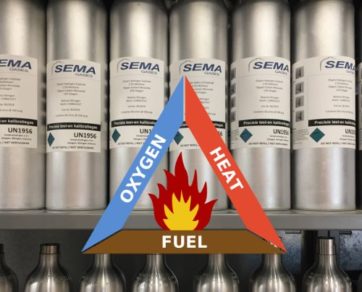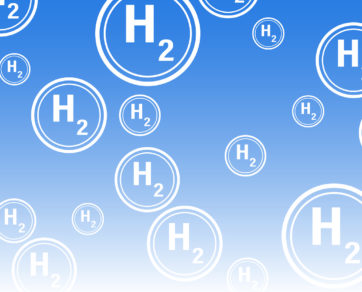ADR what stands for Agreement International Carriage of Dangerous Goods by Road (formally, the European Agreement concerning the International Carriage of Dangerous Goods by Road (ADR)) is a 1957 United Nations treaty that governs transnational transport of hazardous materials. “ADR” is descended from the French name for the treaty: Accord européen relatif au transport international des merchandises Dangereuses par Route).
Concluded in Geneva on 30 September 1957 under the aegis of the United Nations Economic Commission for Europe, it entered into force on 29 January 1968. The agreement was modified (article 14, paragraph 3) in New York City on 21 August 1975, though these changes only took effect on 19 April 1985. A new amended ADR 2011 entered into force on 1 January 2011. Annexes A and B have been regularly amended and updated since the entry into force of ADR. Consequently, to the amendments for entry into force on 1 January 2015, a revised consolidated version has been published as document ECE/TRANS/242, Vol. I and II.
Update on ADR regulations in 2023
As of January 1st, there are some changes in the ADR regulation. Below we sum up the most important changes.
• Starting on 1st January 2023, parties that only consign dangerous goods will be required to appoint a Dangerous Goods Safety Adviser (DGSA) for the first time.
• The ADR exemption (section 1.6.1.44 of ADR 2021) for non-handling consignors is no longer applicable from 31.12.2022 onward.
• This change will mean freight forwarders and traders who sell ex-works need to appoint a DGSA if they act as consignors or on behalf of consignors,
• Under the UN system, a “consignor” is defined as the party that causes the transport to take place and can do so on its own behalf, by another party, or under a contract of carriage.
ADR parties
As of 2016, 49 states are party to ADR: Albania, Andorra, Austria, Azerbaijan, Belarus, Belgium, Bosnia and Herzegovina, Bulgaria, Croatia, Cyprus, Czech Republic, Denmark, Estonia, Finland, France, Georgia, Germany, Greece, Hungary, Iceland, Ireland, Italy, Kazakhstan, Latvia, Liechtenstein, Lithuania, Luxembourg, Malta, Montenegro, Morocco, Netherlands, Norway, Poland, Portugal, Republic of Moldova, Romania, Russian Federation, Serbia, Slovakia, Slovenia, Spain, Sweden, Switzerland, Tajikistan, The former Yugoslav Republic of Macedonia, Tunisia, Turkey, Ukraine, United Kingdom of Great Britain and Northern Ireland.
ADR Content
The agreement itself is brief and straightforward, and its most relevant article is article 2. This section states that except certain hazardous materials, hazardous materials may, in general, be transported internationally in wheeled vehicles, provided that two sets of conditions be met:
1.Annex A regulates the merchandise involved, notably their packaging and labels.
2.Annex B regulates the construction, equipment, and use of vehicles for the transport of hazardous materials.
The appendices consist of nine chapters, with the following contents
1.General provisions: terminology, general requirements
2.Classification: classification of dangerous goods
3.Dangerous Goods List sorted by UN number, with references to specific requirements set in chapters 3 to 9; special provisions and exemptions related to dangerous goods packed in limited quantities
4.Packaging and tank provisions
5.Consignment procedures, labelling, and marking of containers and vehicles.
6.Construction and testing of packagings, intermediate bulk containers (IBCs), large packagings, and tanks
7.Conditions of carriage, loading, unloading, and handling
8.Vehicle crews, equipment, operation, and documentation
9.Construction and approval of vehicles
ADR Hazard classes
The categories of dangerous goods according to ADR are the following:
Class 1 Explosive substances and articles
Class 2 Gases, including compressed, liquefied, and dissolved under pressure gases and vapours Flammable gases (e.g. butane, propane, acetylene)
Non-flammable and non-toxic, likely to cause asphyxiation (e.g. nitrogen, CO2) or oxidizers (e.g. oxygen)
Toxic (e.g. Chlorine, Phosgene)
Class 3 Flammable liquids
Class 4.1 Flammable solids, self-reactive substances, and solid desensitised explosives
Class 4.2 Substances liable to spontaneous combustion
Class 4.3 Substances which, in contact with water, emit flammable gases
Class 5.1 Oxidising substances
Class 5.2 Organic peroxides
Class 6.1 Toxic substances
Class 6.2 Infectious substances
Class 7 Radioactive material
Class 8 Corrosive substances
Class 9 Miscellaneous dangerous substances and articles
Each entry in the different categories is assigned a four digit UN number. It is not usually possible to deduce the hazard class(es) of a substance from its UN number: they have to be looked up in a table. An exception to this are Class 1 substances whose UN number will always begin with a 0. The UN numbers range from UN0001 to about UN3600 and are assigned by the United Nations Committee of Experts on the Transport of Dangerous Goods.



